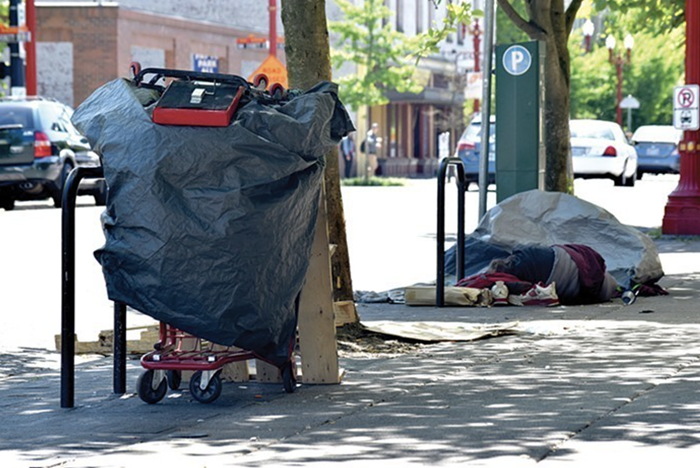Incarcerated people who make art rarely get a chance to share it with the outside world. A show opening on Thursday, July 6 intends to challenge that. Human Being is an exhibition of prison art at Gallery 114 presented by artist and retired lawyer David Slader. He’s been familiar with prison art since the early days of his legal career, and calls it “a cry for acknowledgement.” The exhibition features three artists working in different styles, all of whom are currently incarcerated within the Oregon prison system.
Slader calls the first, an artist who goes by B. Pat, “the most raw of the three.” It’s B. Pat’s work that gives the exhibition its name, gleaned from a stylized picture of a wide-eyed man with the words “human being” scrawled beneath him. “There’s no way that I would want to have the life that would allow me to paint with his intensity,” says Slader.

Another artist, David Drenth, has been in the prison system for 34 years. “He works with colored pencils and wrapping paper he gets from the prison laundry,” says Slader. The lengths of paper that Drenth uses are usually about five or six feet long. But he doesn’t have the luxury of seeing the whole of his canvas while he works: His drawing surface is a small board that he balances on his leg in his cell. Drenth rolls and unrolls the laundry paper like a scroll, working with one small section of it at a time. His images are chaotic and anxiety-filled, and Slader calls them “brutal representations of life in prison.”
The third artist, Jerome Sloan, who Slader describes as a “hyperrealist,” is currently incarcerated in the Snake River Correctional Institution. Sloan’s images are detailed, realistic, and often include his family members. Like Drenth, Sloan works with colored pencils, though being in prison presents him with certain challenges. “When I say ‘colored pencils,’” says Slader, “these are stubby little pencils. They’re not allowed full-length pencils, because they could be used as a weapon.”

Slader is quick to emphasize that the three artists featured in the show are by no means the only people creating art within the Oregon prison system. “There are 14,000 people in Oregon prisons,” says Slader. “Now, out of those 14,000, I would guess there are over a hundred who are creating artwork.... Every now and then someone lands in prison who has great talent—the kind of talent that as a society we want to cultivate.”














